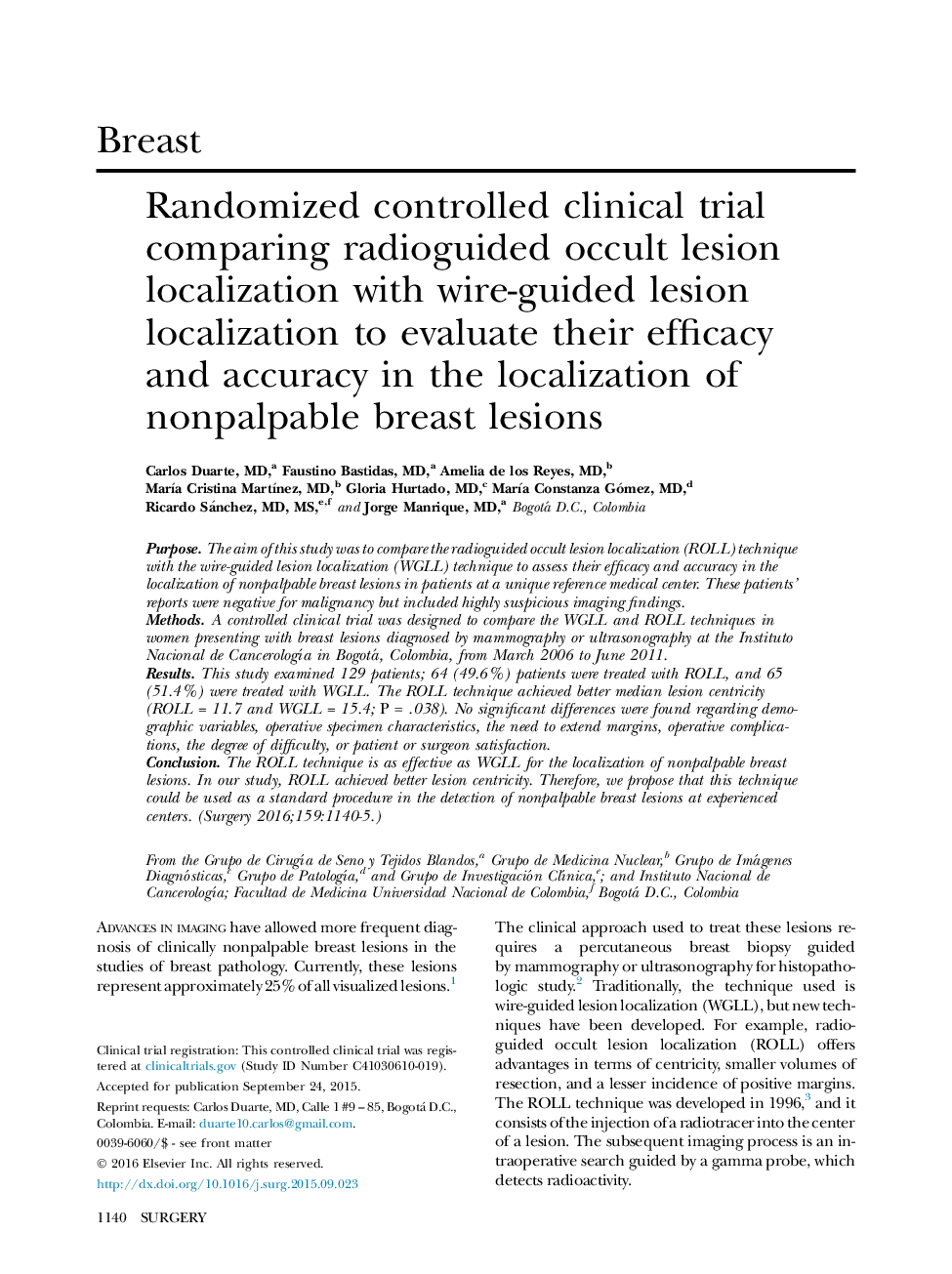| Article ID | Journal | Published Year | Pages | File Type |
|---|---|---|---|---|
| 4306504 | Surgery | 2016 | 6 Pages |
PurposeThe aim of this study was to compare the radioguided occult lesion localization (ROLL) technique with the wire-guided lesion localization (WGLL) technique to assess their efficacy and accuracy in the localization of nonpalpable breast lesions in patients at a unique reference medical center. These patients’ reports were negative for malignancy but included highly suspicious imaging findings.MethodsA controlled clinical trial was designed to compare the WGLL and ROLL techniques in women presenting with breast lesions diagnosed by mammography or ultrasonography at the Instituto Nacional de Cancerología in Bogotá, Colombia, from March 2006 to June 2011.ResultsThis study examined 129 patients; 64 (49.6%) patients were treated with ROLL, and 65 (51.4%) were treated with WGLL. The ROLL technique achieved better median lesion centricity (ROLL = 11.7 and WGLL = 15.4; P = .038). No significant differences were found regarding demographic variables, operative specimen characteristics, the need to extend margins, operative complications, the degree of difficulty, or patient or surgeon satisfaction.ConclusionThe ROLL technique is as effective as WGLL for the localization of nonpalpable breast lesions. In our study, ROLL achieved better lesion centricity. Therefore, we propose that this technique could be used as a standard procedure in the detection of nonpalpable breast lesions at experienced centers.
